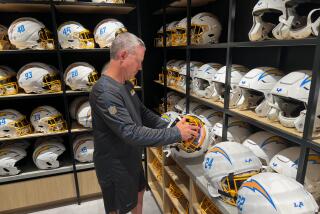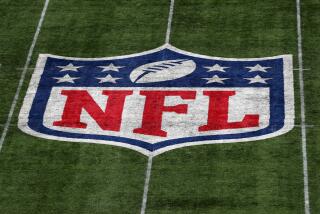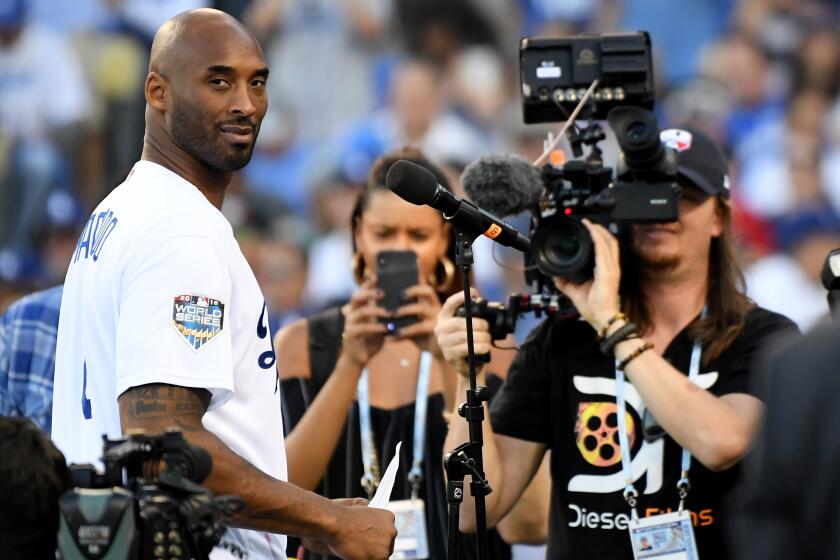THE NFL : NFL-gate: Execs, Lies, Videotape : It turns out the league agreed not to discipline 16 players who failed drug tests between 1993 and 1995 until after a new substance abuse program was in place.
The new week began with a published report that rocked the sports world: The NFL had agreed secretly with the players union not to punish 16 players caught failing drug tests between 1993 and ’95.
The first reaction, of course. was to dismiss the report as farfetched. Why, that’s fewer than one player per team caught snorting, smoking, inhaling, snacking on steroids or drinking to excess over a two-year period of time.
The Cowboys alone probably had that many addicts employed between 1993 and 1995.
Then someone pointed out the real significance of the inflammatory New York Times story that had editors everywhere suggesting this was going to rival the IOC cover-up. The NFL had been caught cheating, protecting a bunch of druggies, and there was videotape of a union official confirming this to a group of NFL players.
Stop the presses! Even though it’s run by an attorney, this might have been the first time anyone suggested you cannot trust the NFL.
But more than that, here in L.A., the timing of the revelation was suspicious. NFL representatives are coming to town Wednesday to jump-start the pursuit of public money before a Sept. 15 deadline to determine where the league will put an expansion franchise.
The NFL has gotten nowhere asking for public money for the construction of a new stadium, but maybe it figured understanding citizens would be more inclined to use public money if they thought they were building a rehab center for a new team.
It’s possible. Under the NFL’s current drug policy, all 65 players on a team’s roster could flunk a test and still be eligible to compete without any public announcement, so long as they are receiving counseling and treatment.
But do you really think the NFL would cover up the use of drugs?
No way--unless it was a quarterback and he was scheduled to start on Monday night TV--but what’s the deal here with allowing 16 players to go free?
Simple explanation, which was not presented in the New York Times. In 1993, the NFL and the union signed off on a new collective bargaining agreement, the understanding being that they would begin work on a new joint drug policy.
The NFL previously had imposed a two-stage drug policy without the union’s approval, and although it had the right to suspend players, it was powerless to insist on counseling and treatment.
In 1995, the league and the union adopted a three-step program, allowing players to seek private treatment before being publicly suspended, but making counseling and drug testing mandatory after the first offense.
While the league and the union were putting the new policy together between 1993 and ‘95, there were 16 players who failed drug tests. (An unidentified NFL owner told the New York Times the number actually was more than two dozen, but he could have been high.)
The league agreed not to discipline the 16 players until after a new drug program was in place. And with the union’s approval, the league then applied the new drug policy to those players. Nothing too devious about that.
“In 1995, all 16 players were slotted into the new program, tested regularly, treated by professional counselors and physicians, and [were] subject to suspension upon any further violations,” said the NFL in a statement.
A league official said later that several were caught again, and suspended, but provided no names. Some of the 16 probably received breaks, because had they fallen under the NFL’s earlier drug policy, they might have been subjected to suspension rather than counseling and treatment. But the league considered that a fair trade-off to win approval from the union for counseling and treatment.
No reason to pull those investigative reporters from the IOC scandal just yet. Fifteen of the 16 druggies reportedly are no longer in the league.
A union spokesman said that Executive Director Gene Upshaw would have no comment because their bylaws insist that the players’ meetings be confidential, and the agreement was forged at a union meeting.
In fact, none of this would have come to light had the union not hired a Florida videotape company to film its annual meeting on Maui in 1995. The company had 40 hours of videotape of the meeting, which was going to be used for promotional purposes and included talk on how to beat the salary cap, and an assertion by one union official that alcohol abuse was the biggest problem among NFL players.
The tape became public after the videotape company sued the union in a dispute over payment.
It’s a strange story, but not as damning as it might have been on first read. And for further clarification, there’s absolutely no truth to the rumor that the union failed to make payment to the videotape company because it had spent all of its money on drinks.
Then again, if it had, who would know?
More to Read
Go beyond the scoreboard
Get the latest on L.A.'s teams in the daily Sports Report newsletter.
You may occasionally receive promotional content from the Los Angeles Times.










